Willy Wonka Revealed: Get to Know the Real Gene Wilder (EXCLUSIVE)
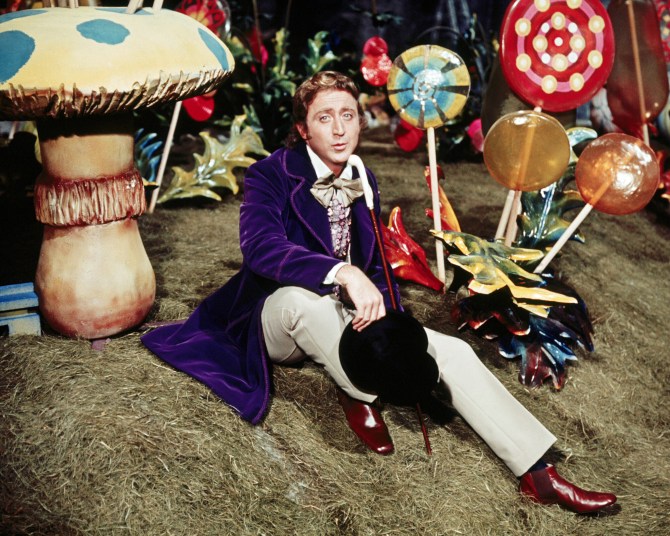
It’s difficult to think about the late Gene Wilder and not have thoughts of ever-lasting-gobstoppers, snozzberry-flavored wallpaper (“Snozzberry? Who ever heard of a snozzberry?”), or Wonka Bars coming to mind. His performance as the title character of 1971’s Willy Wonka and the Chocolate Factory touched several generations of viewers, giving them a family film of pure imagination that, to many, rivals the magic of something like The Wizard of Oz. Although, interestingly, Gene himself was not one of its biggest fans. Brian Scott Mednick, who wrote the definitive biography of the actor/writer/director, Gene Wilder: Funny and Sad, exclusively explains, “I interviewed Mel Stuart, the director of Willy Wonka, for the book, and he just raved about Gene and about how much the kids all loved him. But Gene called Stuart a maniac who yelled at everyone — not him — and thought that created an unpleasant environment on the set. He gave an interview once where he said he did not want his gravestone to say, ‘Here Lies Willy Wonka,’ yet ironically he did not have much choice about his legacy. When he died, all the news outlets highlighted his role as Willy Wonka above everything else. Gene wanted to be most remembered for Young Frankenstein.”
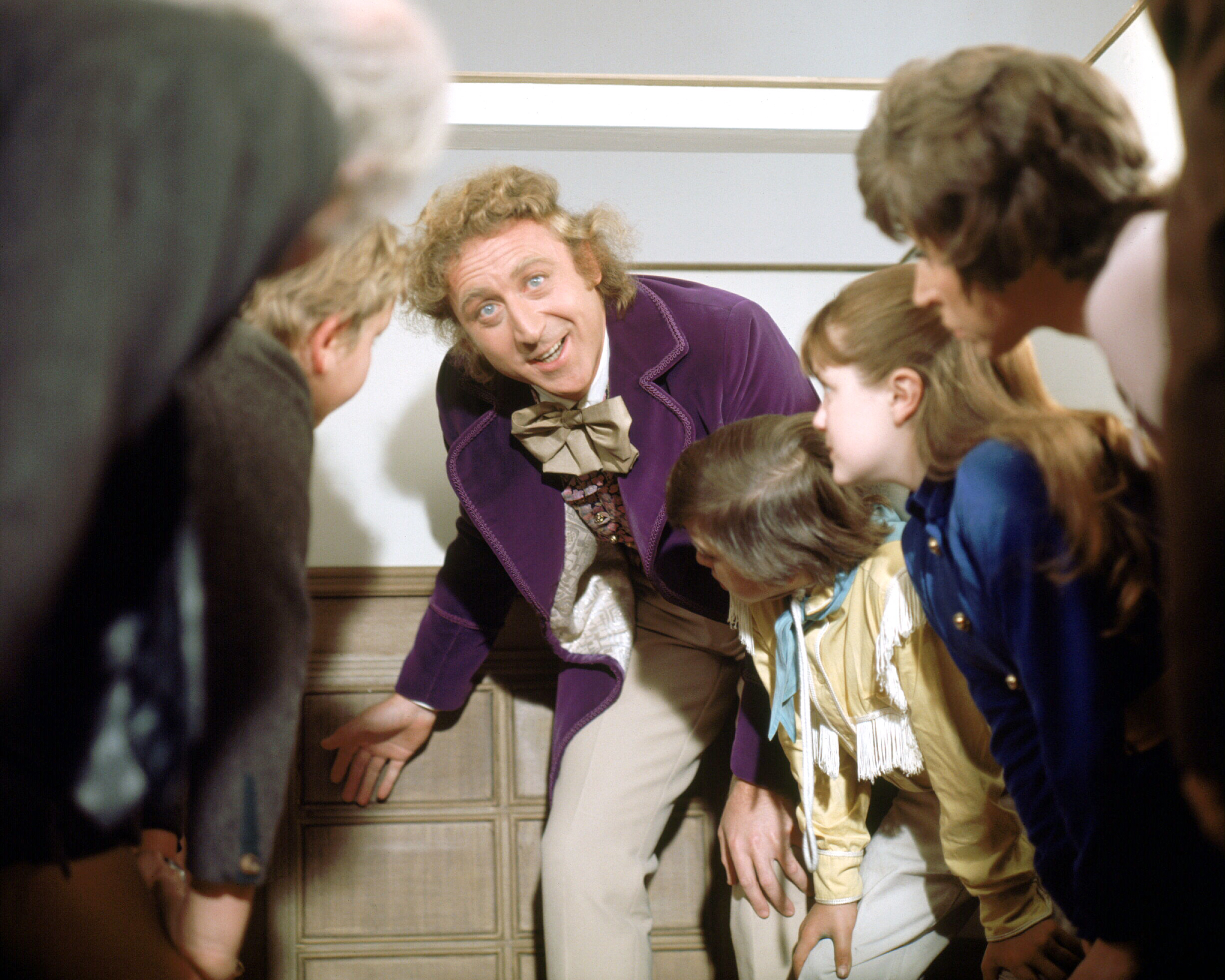
(Photo Credit: Getty Images)
That collective response from the media, he says, isn’t surprising considering that those previously-mentioned generations have grown up on Willy Wonka, just as they had The Wizard of Oz. “I’ve seen the movie probably 40 times,” Brian explains, “I own the DVD and, still, if I am flipping channels and turn it on half way, I wind up watching it until the end. It’s just magical.” And it’s obvious that the author felt the same way about Gene himself, given that he spent a reported 15 years researching and writing Funny and Sad. “Why Gene Wilder?” he asks rhetorically. “What is it about this neurotic Jewish guy from Milwaukee with all that frizzy blond hair that hooked me at such an early age? Well, I think it was probably a sense of identification. There are few lonely moviegoers out there who don’t have at least one actor or actress they feel speaks directly to them. In every character Gene Wilder played, I saw a little bit of me. There is a very fine line between comedy and tragedy, and I can think of no other actor who walked that tightrope better than Gene Wilder.”
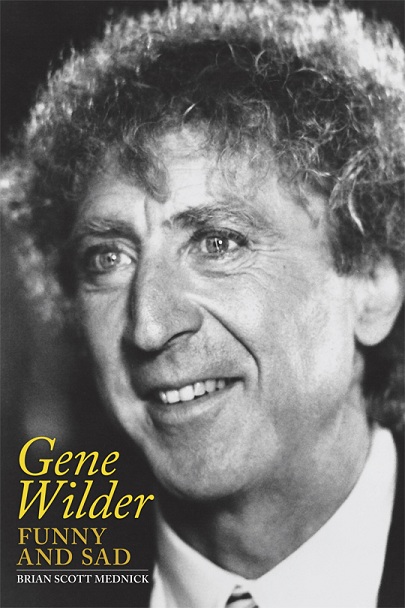
(Photo Courtesy: Brian Scott Mednick)
And there are few actors out there with a reputation of just being a nice guy that seemed to fit the bill better than him. “That was the constant theme among everyone I interviewed,” he says. “It got to the point that I was wishing for one person to call him a jerk and say that he poisoned pigeons in the park or something. I mean, I wanted to sell some books here! But his colleagues found working with him to be among the hightlights of their career. Everyone spoke so highly of him, even people he never met. I was speaking on the phone with Jerry Lewis about 16 years ago about something totally unrelated to my book, and he knew I was writing it, and said he had ‘such high regard’ for Gene Wilder and regretted that they never met.”
Gene’s early days.
He was born Jerome Silberman on June 11, 1933 in Milwaukee, Wisconsin to Jeanne and William J. Silberman, the latter a Russian Jewish immigrant who was a manufacturer and salesman of novelty items. When he was eight years old, his mother was diagnosed with rheumatic fever and when he was told by her doctor to try and make her laugh, one could argue that this was the time when he first decided to become an actor as he had to mold himself into an entertainer. More likely, though, it was an event three years later that solidified the idea.”Gene claims he was bitten by the acting bug after seeing his sister, Corinne, in a dramatic recital of Guy de Maupassant’s The Necklace at the Wisconsin Conversvatory of Music. He was so envious of the attention she received from the audience — how everyone quieted down and fixated on her — he thought this was the closest to being God that’s achievable as a human being. So he approached her acting teacher, Herman Gottlieb, and told him that he wanted to study with him. Gottlieb told Gene, who was 11 at the time, that if he came back in two years and was still interested, he’d take him on. The day after his thirteenth birthday, he went to Gottlieb and studied with him for five years.”
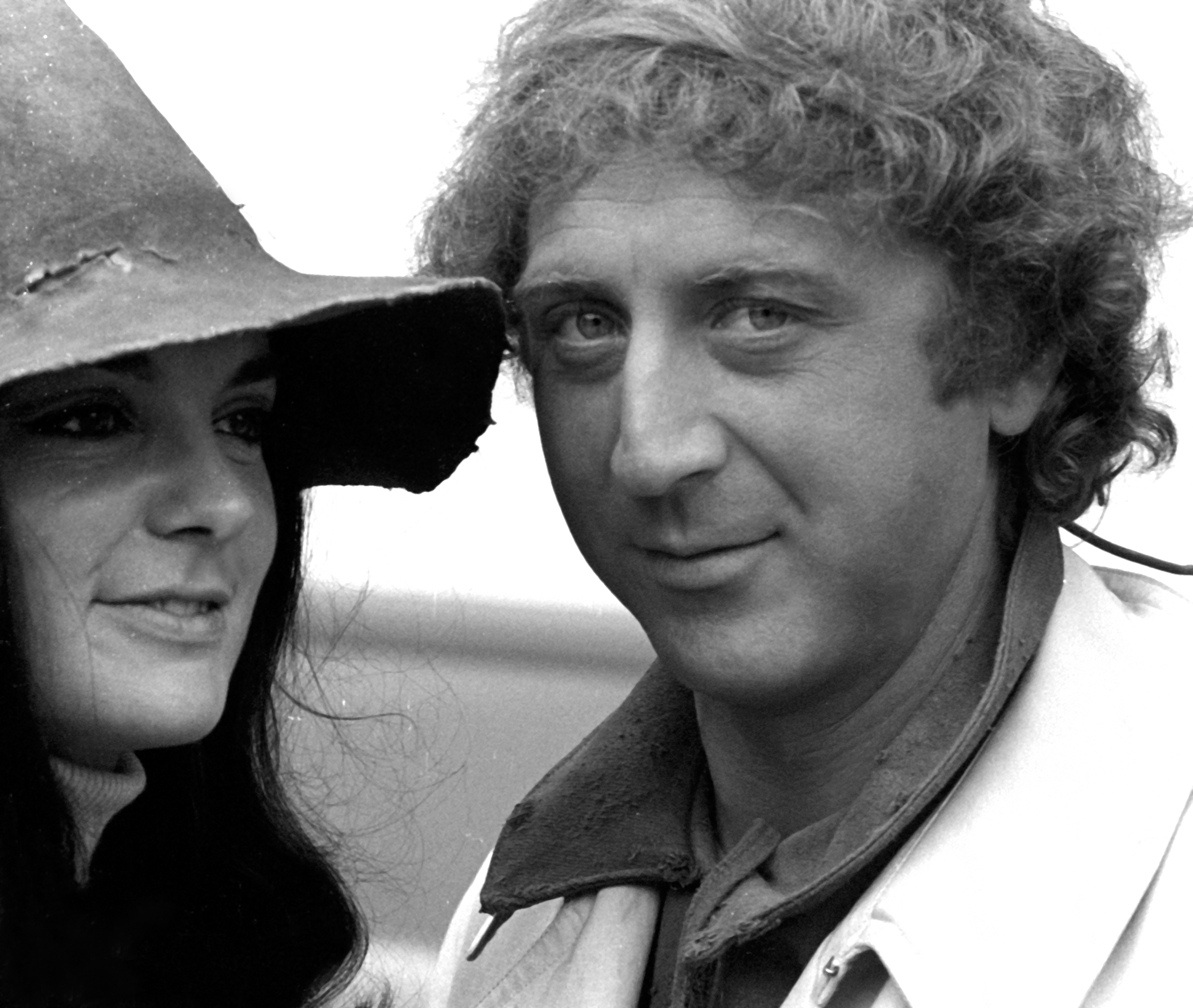
(Photo Credit: Getty Images)
Attending the University of Iowa, upon graduation in 1955, Gene was accepted at the Bristol Old Vic Theatre School in Bristol, England, but eventually returned to the US and lived with his sister and her family in Queens, NY so that he could attend the HB (Herbert Berghof) Studio, which was devoted to professional training in the performing arts. Changing his name from Jerome Silberman to Gene Wilder, he began scoring stage roles as part of the Actors Studio. In the early 1960s, he appeared on the TV series The Play of the Week, but it was stage performances in the years prior that had gotten him to Broadway in the shows The Complaisant Lover, Mother Courage and Her Children, One Flew Over the Cuckoo’s Nest, The White House, and Luv. It was, incidentally, Mother Courage that starred Anne Bancroft, who introduced him to her boyfriend (later husband), Mel Brooks, which would be highly significant later. He returned to television for a 1966 production of Arthur Miller’s Death of a Salesman, followed by the TV movies The Scarecrow and Thursday’s Game. Also, from 1972-77, he provided his voice for The Electric Company‘s “The Adventures of Letterman” vignette.
1967… it was a very good year.
Gene was able to make the transition to the big screen in 1967. First there was Bonnie and Clyde, director Arthur Penn’s powerful take on the crime spree and romance of Clyde Barrow (Warren Beatty) and Bonnie Parker (Faye Dunaway). Admittedly his was a small part, but it nonetheless put him on the movie scene as he played kidnap victim Eugene Grizzard. In that same year, he got what he perceived to be his big break: Mel Brooks’ comedy The Producers (which would be followed in 1974 by the one-two punch of Blazing Saddles and Young Frankenstein).
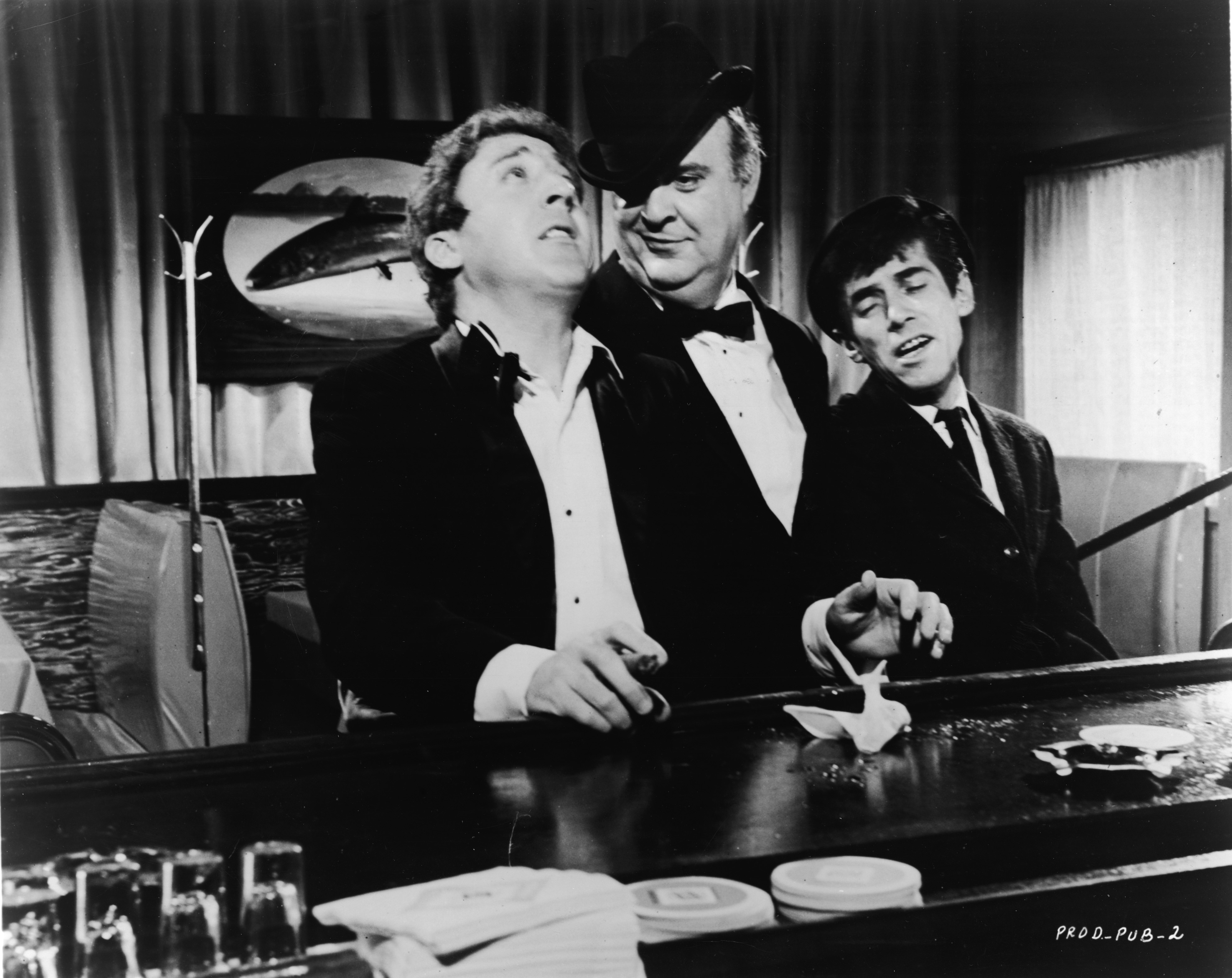
(Photo Credit: Getty Images)
Brian reflects, “Gene once said when asked in the ’70s if meeting Mel Brooks was a significant event in his life, ‘Would you ask Moses if God bestowing the Ten Commandments upon him was a pivotal event?’ So obviously meeting Mel and doing The Producers was both life-and-career changing. The three films they made together really are a comic trifecta. They always will be considered among the very funniest films ever made. Mel maintains that The Producers ‘would have been a very good comedy with Zero Mostel and another comic… But Gene Wilder made it a classic.'”
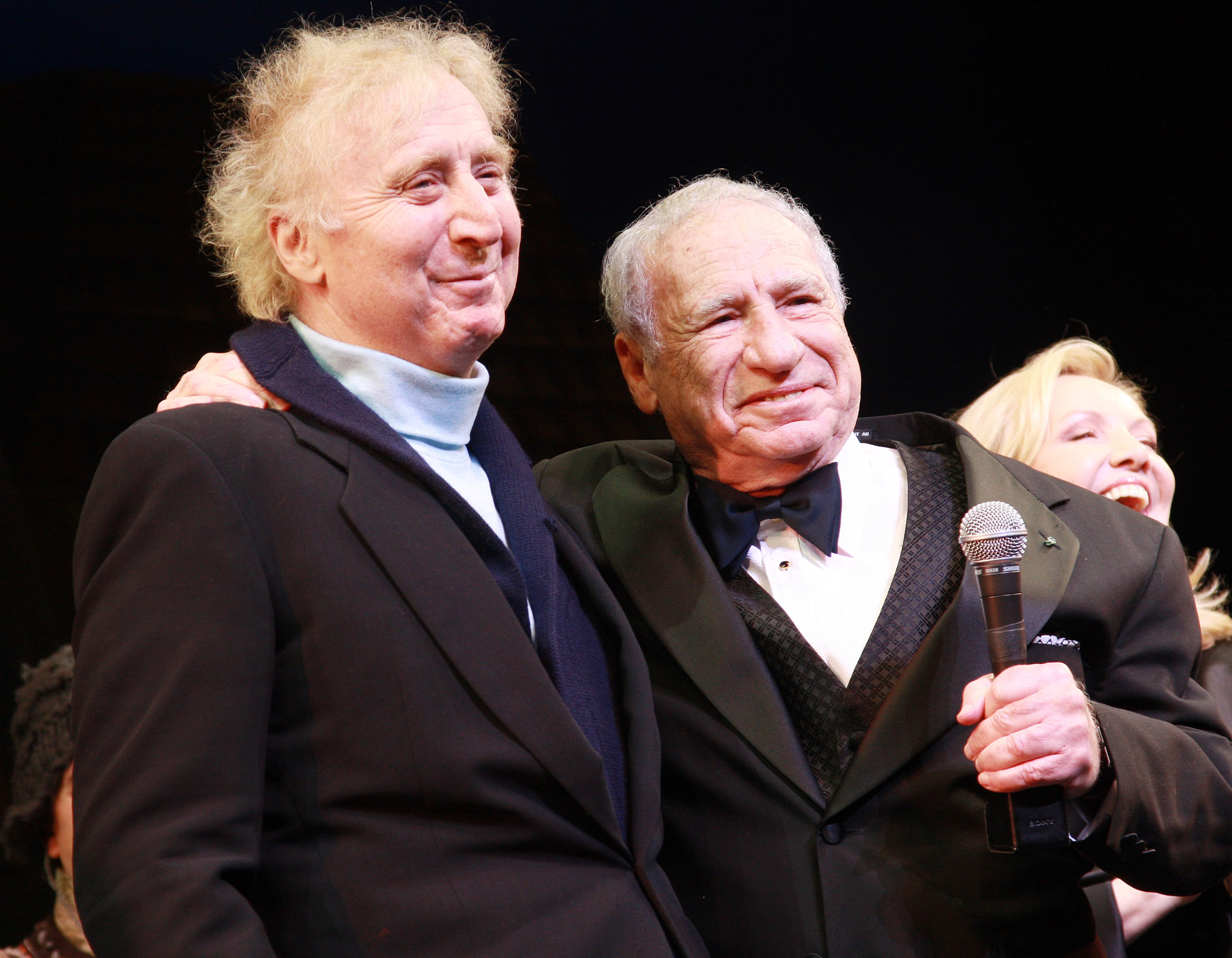
(Photo Credit: Getty Images)
There was talk of a fourth collaboration, this time on a black and white comic version of Dr. Jekyll & Mr. Hyde, but by all reports, Gene didn’t want to be in it if Mel was because of their different comic styles. “The Jekyll & Hyde project was just an idea they had tossed around,” says Brian. “I don’t think it ever had any realisitic chance of getting made. The truth was that Mel was really enjoying acting in his own films and Gene had just started writing and directing his own films, so the professional relatonship just grew apart, but they always remained very close friends until the very end. They spoke on the phone all the time, and Mel and Anne were even known to spend the night with Gene and [his wife] Karen in Connecticut.”
Everything You Always Wanted to Know About Sex provides the answer.
By 1972, Gene was desperately in need of a hit. His previous films, from The Producers to Willy Wonka, had not worked out at the box office (this despite the fact he’d been nominated for an Academy Award as Best Supporting Actor for the former). He finally found it in the Woody Allen film based on Dr. David Reuben’s book Everything You Always Wanted to Know About Sex (but Were Afraid to Ask). Consisting of several short vignettes, Gene stars in one playing Dr. Ross, who actually falls in love with the partner of one of his patients, which just happens to be a sheep. Obviously it was an odd role, but considering that the film cost $2 million and grossed $18 million, Gene could handle it. “It was a good role for Gene at that point in his career,” Brian says, “and he always considered that part one of his favorites. I mean, could you picture any other actor in love — not just acting, but really seeming in love — with a sheep? It was classic Gene.”
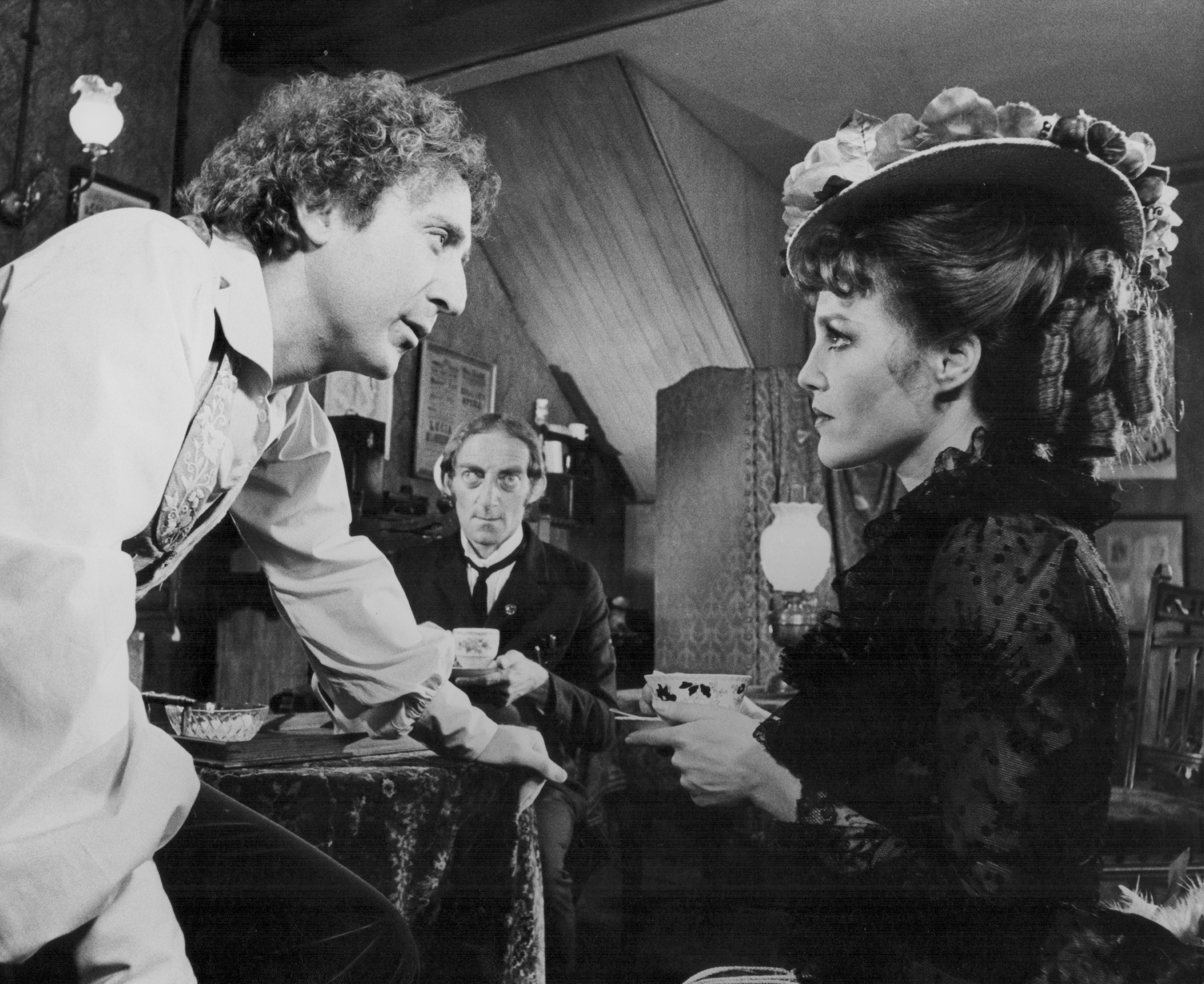
(Photo Credit: Getty Images)
It also started a great run that would include the previously-mentioned Blazing Saddles and Young Frankenstein (co-written with Mel Brooks), as well as The Adventures of Sherlock Holmes’ Smarter Brother (on which Gene also served as writer and director). Over the next few years, he had differing degrees of success with films like The World’s Greatest Lover, The Frisco Kid, and Sunday Lovers, but in between, he unexpectedly began a new collaborative relationship that was almost as potent as the one he’d had with Mel.
Gene Wilder and Richard Pryor: Comedy Duo?
Landing squarely in the department of “you just never know,” in 1976, Gene co-starred with comedian Richard Pryor in the comedy Silver Streak, the success of which led to 1980’s Stir Crazy, 1989’s See No Evil, Hear No Evil, and 1991’s Another You. There was nothing on paper that would suggest that these two people, coming from such different backgrounds, could exhibit such on-screen chemistry.
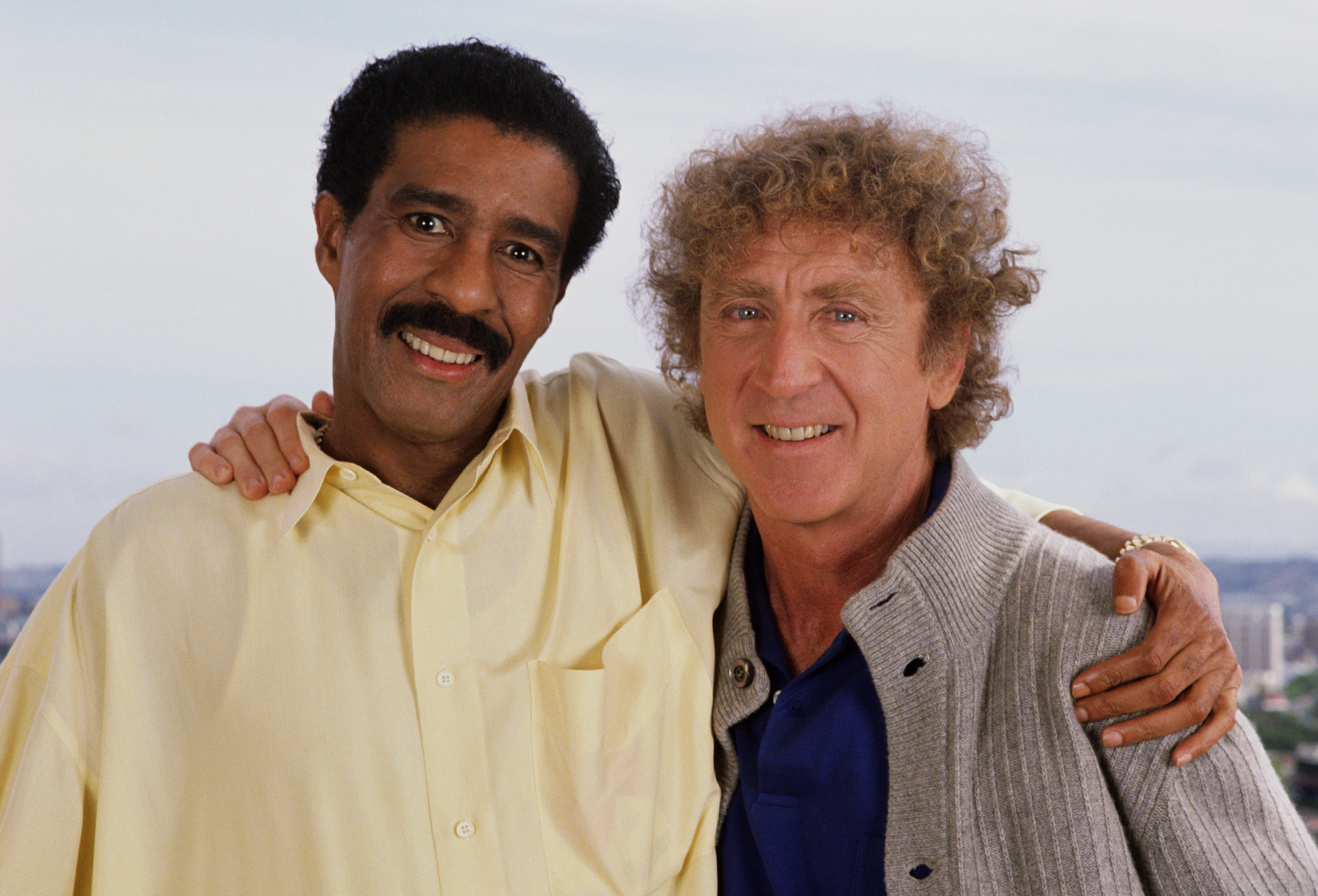
(Photo Credit: Getty Images)
“Even though Pryor worked on the screenplay for Blazing Saddles, he and Gene did not meet until shortly before filming their first scene in Silver Streak,” says Brian. “They got along well and found they had an innate comedic chemistry, but they were not friends off screen. The film was a big hit, but Pryor resented doing it; he thought he was brought in just because the filmmakers wanted to fend off criticism from blacks, which was ridiculous. Pryor was incredibly sensitive and paranoid,” Brian explains. “When they did Stir Crazy a few years later,” he elaborates, “[Gene] and Pryor again got along, but they rarely socialized off the set. Pryor’s drug use was so rampant that he often showed up late on the set — sometimes half a day late — which infuriated the crew. He delayed production to the point where the film’s $10 million budget ballooned to $15 million. At one point, Sidney [Poitier, the director] met with the studio executives to talk about replacing Pryor with another actor and reshooting his earlier scenes, but Pryor ended up returning to finish the picture.”
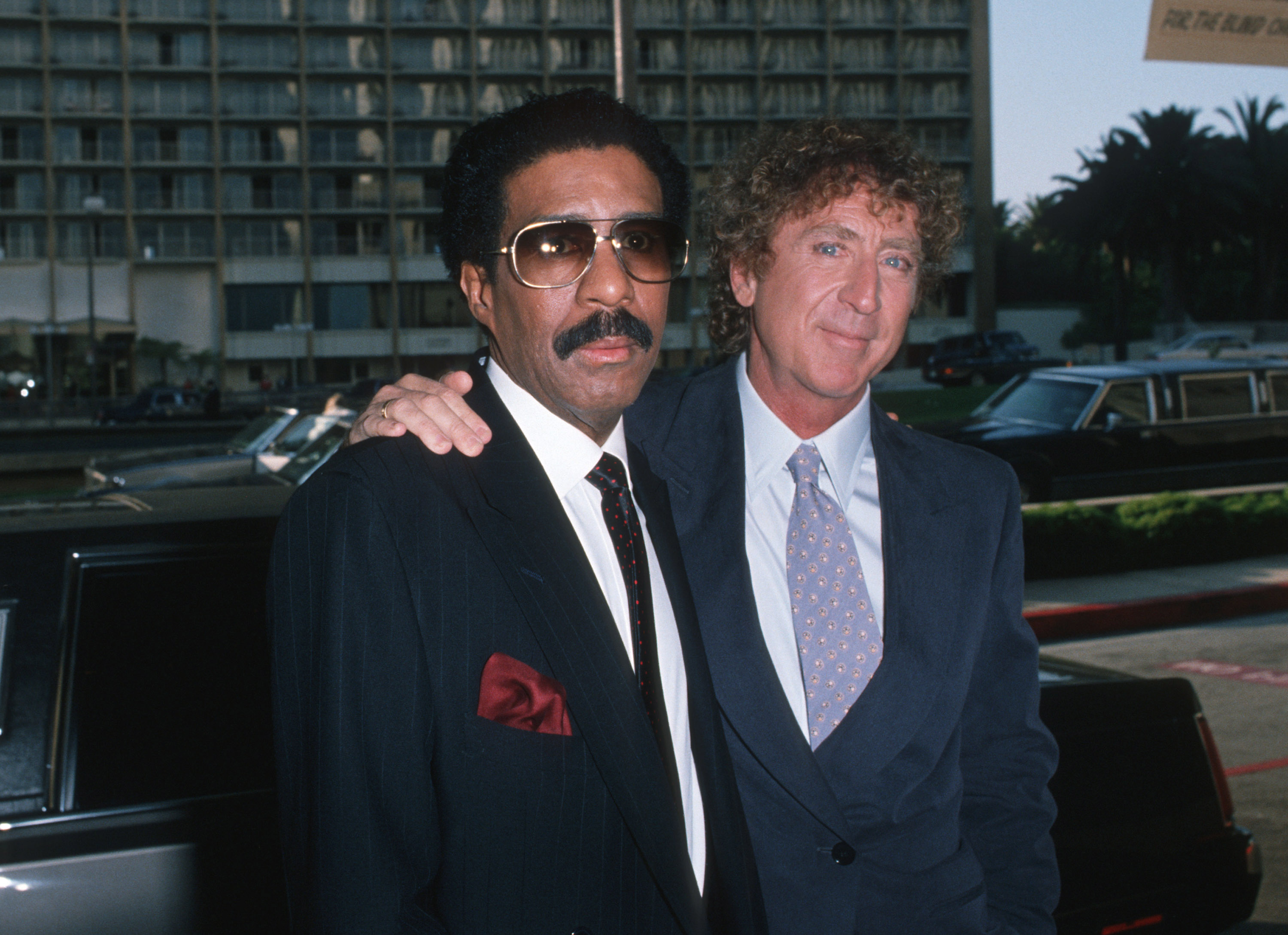
(Photo Credit: Getty Images)
It was 10 years, he notes, before they made their third film together, See No Evil, Hear No Evil, by which point they were both very different men. Richard Pryor had gone through his fifth divorce and began having health problems that led to rumors he had AIDS (later diagnosed as multiple sclerosis). For his part, Gene was dealing with the cancer battle of then-wife Gilda Radner, which resulted in a far more mellow attitude from both of them during production. “They also socialized more, something they did not do on their previous films,” says Brian, “but once again, despite the outward happiness he displayed during interviews for See No Evil, Hear No Evil, Pryor did not think much of it. He referred to the film as ‘lackluster’ in his autobiography. Having recently been diagnosed with MS, he started to feel the toll of the disease during filming. He admitted his motivation to do the film was not to reunite with Gene so much as it was for financial reasons. Had they stopped doing movies together then, they would have left a pretty good track record behind, but unfortunately they did a fourth film together — Another You — which was a disaster on almost every level.”
A Career and Life in Transition
Many actors have a finite shelf life in terms of their career, where they have an absolute connection with moviegoers, but then something, usually unknown, happens and attendance to their films continually trails off. As a result, some get desperate enough to take any role that comes their way, while others simply make a change and find other interests. Brian explains, “Gene’s last success with a feature film was with See No Evil, Hear No Evil in 1989. He made only two movies in the early 1990s — Funny About Love and Another You — both of which were total flops with critics and at the box office. He was approaching 60, and he had given up on directing, so the scripts he was being offered just didn’t appeal to him. He did some TV work in the ’90s, had his own short-lived sitcom, but he hated doing TV, and he basically retired after 2003. He always said if the right script came along he would do it, but he said everything he was being offered was filled with foul language and special effects.”
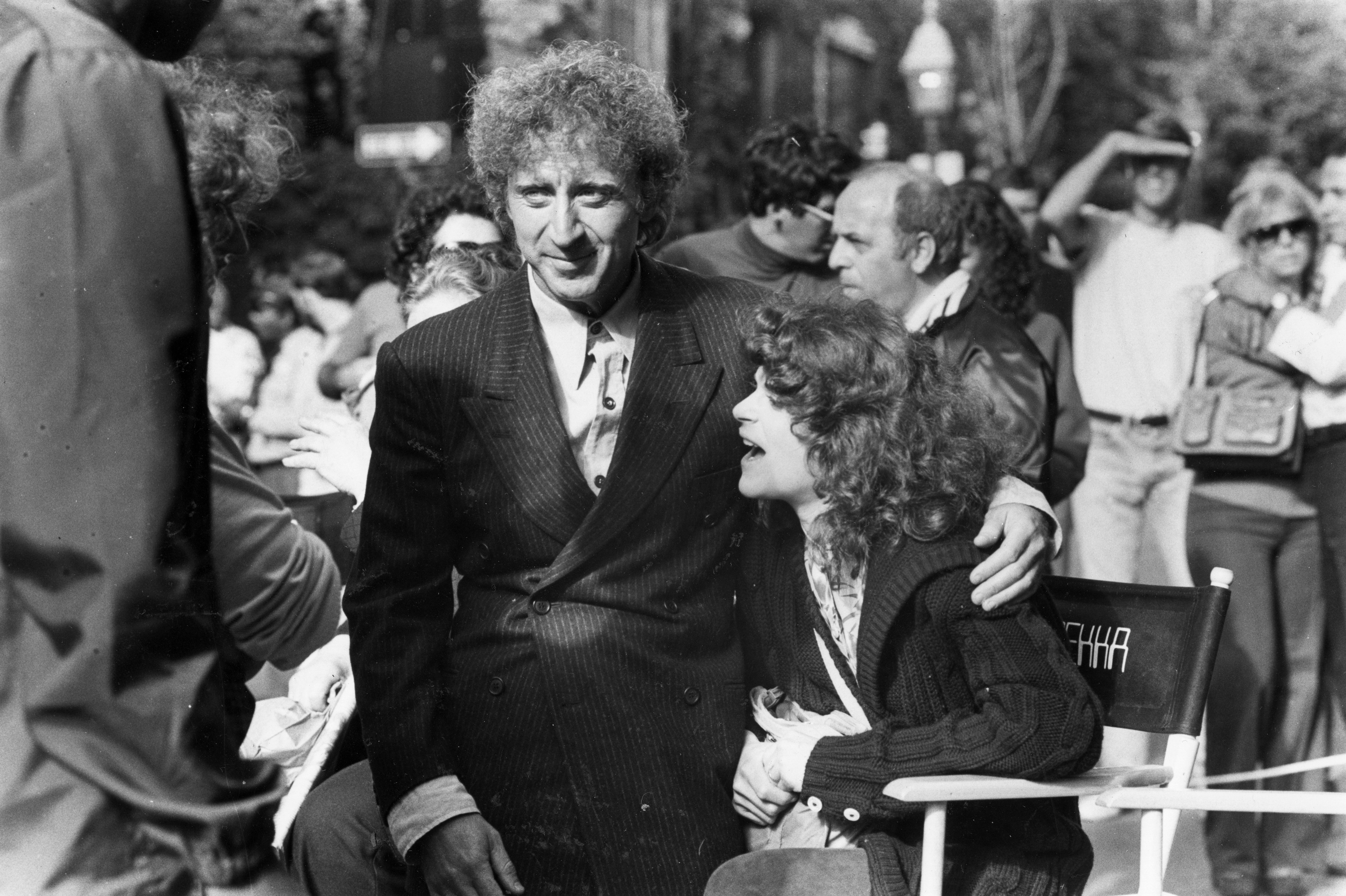
(Photo Credit: Getty Images)
He also had a challenging personal life. He had been married to Mary Mercer from 1960-65, Mary Joan Schutz from 1967-74, and Gilda Radner from 1984-89. The latter was “sold” to the world as picture-perfect, but, in truth, was far from it, and not because of the late actress’ well-documented battle with ovarian cancer. “When Gene met Gilda on the set of their first film together, Hanky, Panky, in 1981, he had just gotten out of a very intense relationship,” Brian points out. “Gilda was married at the time, but the marriage was on the rocks. She really pursued Gene, and she finally got him to marry her in 1984. But despite their outward persona of being the perfect Hollywood couple, Gene found Gilda extremely difficult to live with. Her neediness annoyed him and this often put a strain on the marriage. In addition, there was Gilda’s bulimia and, according to Gene, Gilda was also known to sometimes start the morning with a flask that contained vodka and Tab.
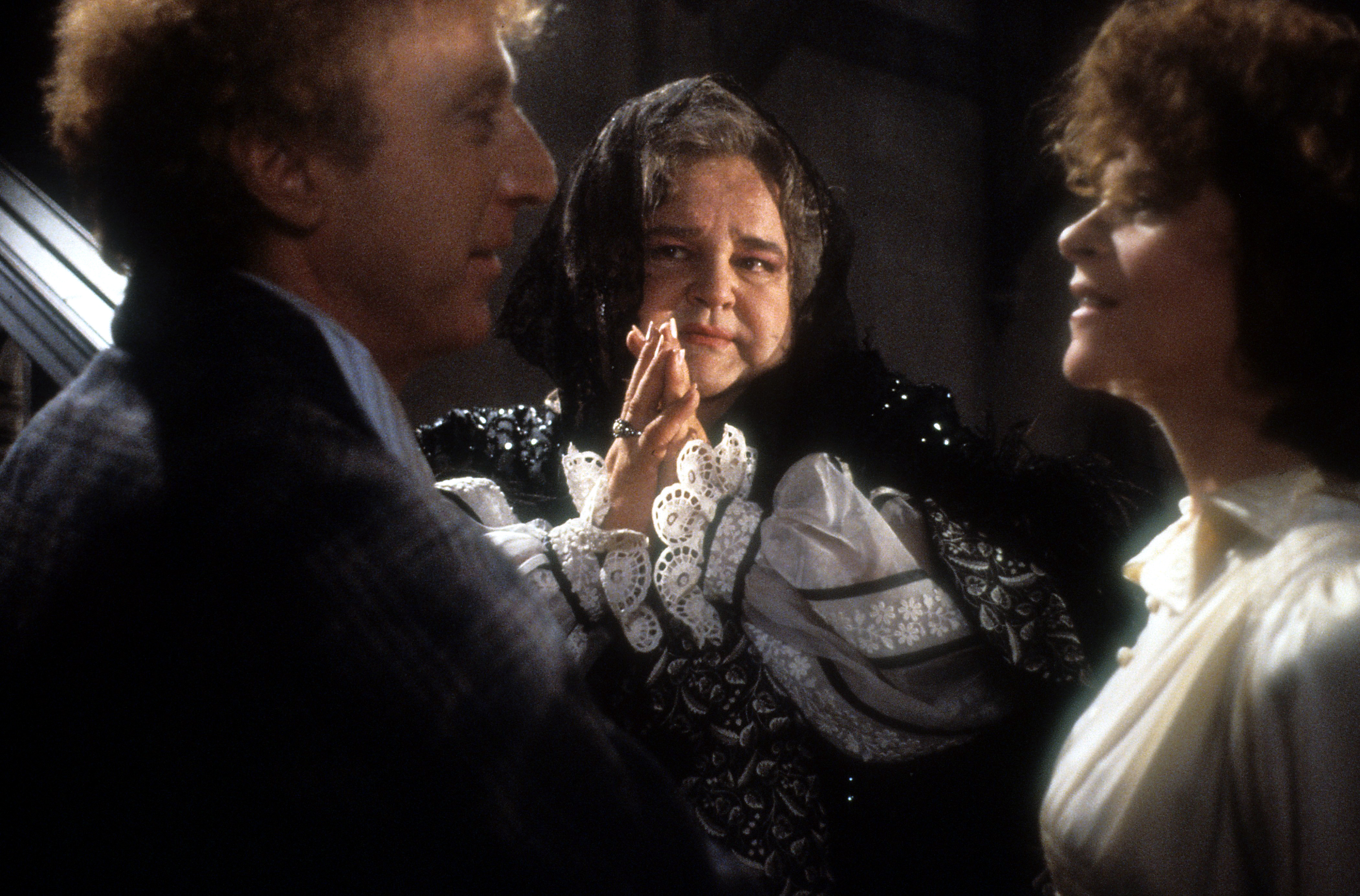
(Photo Credit: Getty Images)
“By the time Gilda got cancer,” he adds, “he knew he had to stay with her. And he was great. But in retrospect, it was a very sad marriage, because it was one-sided. Gilda loved being Mrs. Gene Wilder — she always signed her checks Gilda Wilder. But Gene found her very needy. She always wanted reporters coming to the house to do profiles on them, and Gene made it clear to her that was not his thing. After she died, he formed Gilda’s Club, which is a cancer support community for people with cancer and their families and friends. So he helped make her legacy one that is associated with both a lot of laughter, but also a reminder of something very sad. And the charity has expanded worldwide, so that’s a good thing. When Connie Chung interviewed Gene a year after her death, he said his time with Gilda was ‘the best years of my life.’ He knew it would be damaging to his reputation and the myth of them as an ideal couple to say anything less. It would be 15 years before he would admit in his memoir that although he and Gilda did have their share of good times, their marriage was far from the best years of his life.”
One More Chance for Love
“The best years” would probably best describe the near 25 years he spent with his final wife, Karen Webb, a sign language expert with the New York League for the Hard of Hearing who had coached him for his deaf role in See No Evil, Hear No Evil. A week before shooting wrapped, Karen invited Gene to her Manhattan apartment for dinner. Although he accepted her dinner offer, he initially had doubts since he was attracted to her and Gilda was still alive. They shared a brief kiss at the end of the evening, but it wasn’t until several months after Gilda’s death that they resumed contact after Karen enlisted Gene’s aid on a public service video about the hard of hearing. That fairly quickly blossomed into full romance.
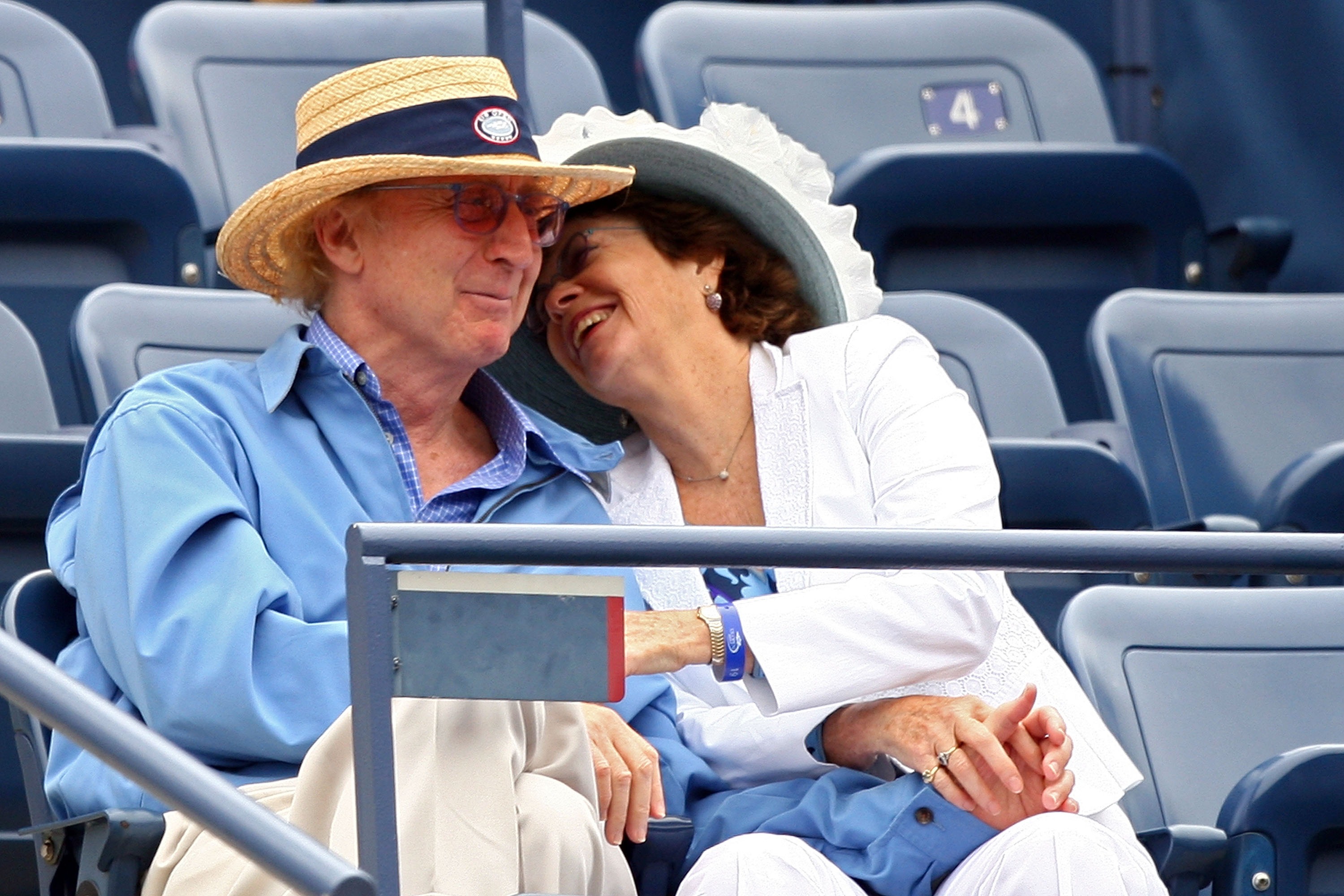
(Photo Credit: Getty Images)
“They married in September 1991, two and a half years after Gilda died,” Brian details. “Gene called Karen the great love of his life. It was his fourth marriage and the longest; he died shortly before their 25th wedding anniversary. Gene admitted he was very unhappy for a long time with Gilda. He didn’t think he’d get married again, and he said he didn’t believe in fate. And he nearly cried when telling an interviewer how passionate his love for Karen was. He said he always felt you make your own life and then call it fate, but Karen made him believe in fate. Like any marriage, it wasn’t without its problems, but it was a very strong, loving marriage. He just idolized her.”
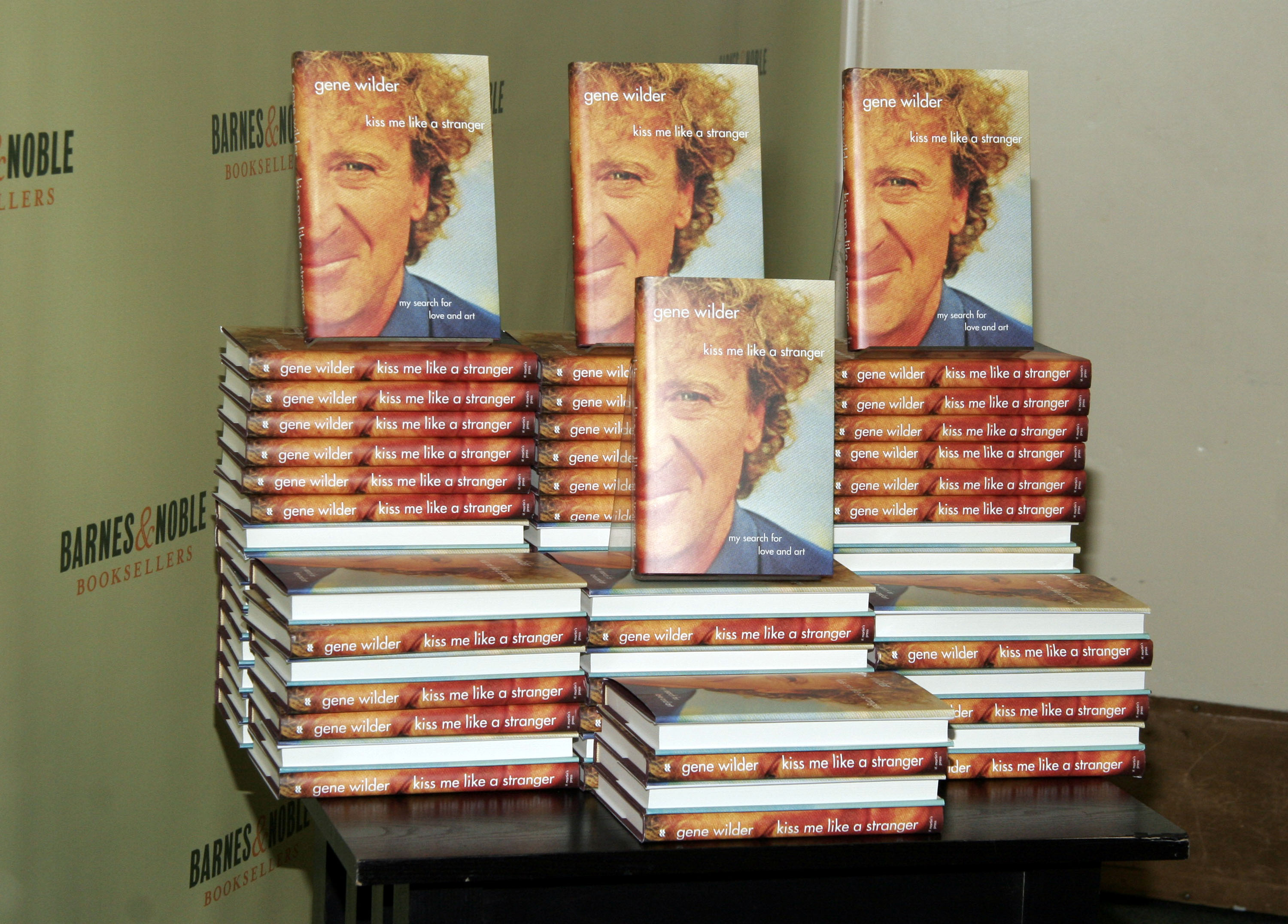
(Photo Credit: Getty Images)
When Gene had given up his acting career (besides the occasional television appearance), he and Karen devoted themselves to charitable efforts, painting watercolors, and Gene taking up writing. In 1998, he had co-written Gilda’s Disease, in which he shared experiences from Gilda Radner’s struggle with ovarian cancer. From there, he wrote a memoir, Kiss Me Like a Stranger: My Search for Love and Art (2005); and then started writing novels with My French Whore (2007), The Woman Who Wouldn’t (2008), What is This Thing Called Love? (2010, a collection of short stories), and Something to Remember You By: A Perilous Romance (2013). Three years later — and quite shockingly — on Aug. 29, 2016, word came out that Gene had died in his home in Stamford, Conn. from complications arising from Alzheimer’s disease. Reaction to his passing from around the world was swift and intense, and it no doubt would have touched him deeply that people cared so much.
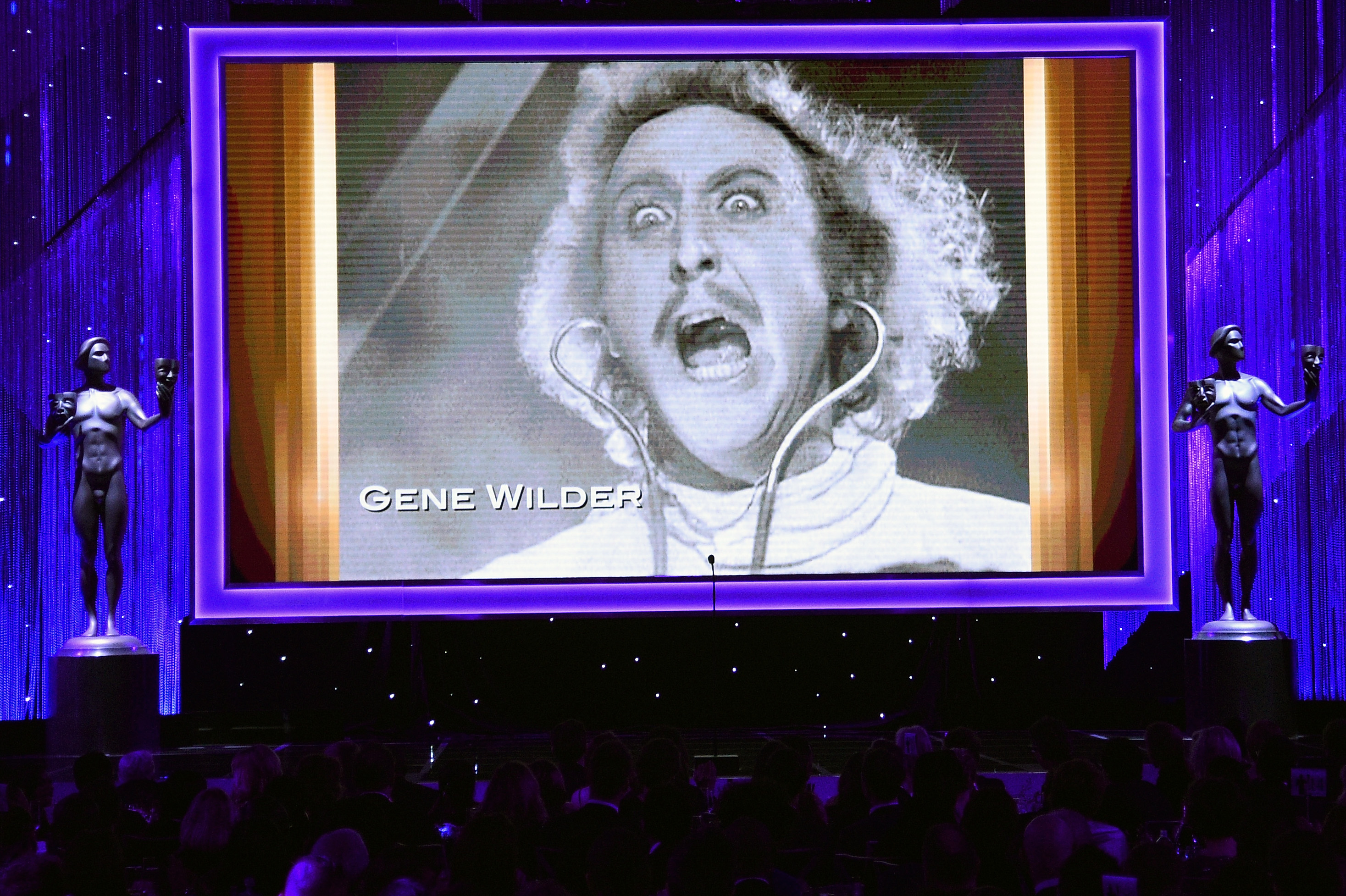
(Photo Credit: Getty Images)
“I knew he meant a lot to a lot of people,” Brian muses, “but having been such a devoted fan and having spent a large part of my life writing this book, I did not think he would be lauded the way he was. I was so moved. Rarely have I seen such an outpouring of sadness and reverence to so kind and gentle a soul who brought laughter to so many millions of people. There will never be another Gene Wilder. He left the world a richer, happier place.”
More from Woman’s World
Janet Leigh Reflects On That Famous ‘Psycho’ Shower Scene In a Recovered Interview
A Look Back at Some of the Best (and Weirdest) Double Features From Our Youth












